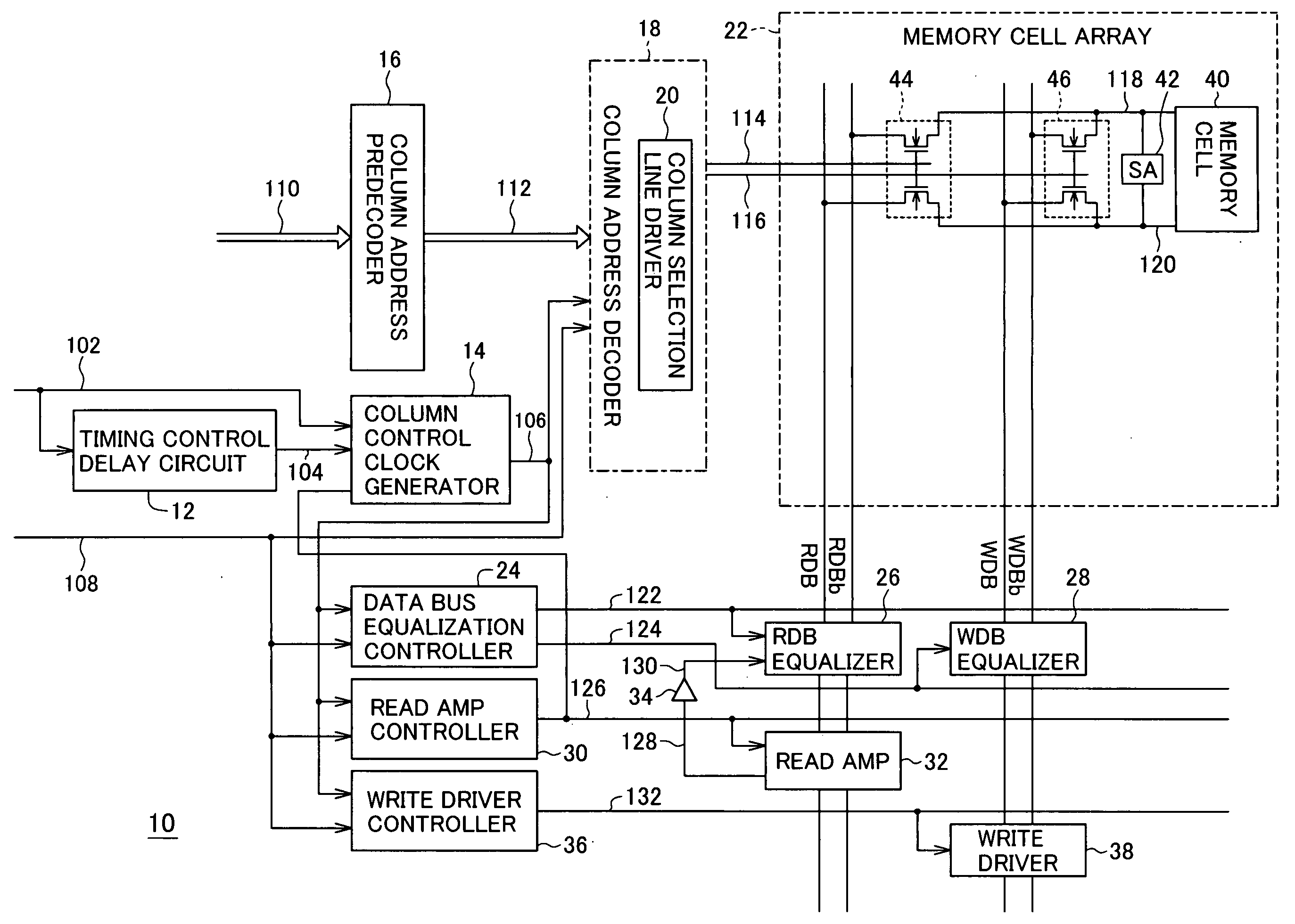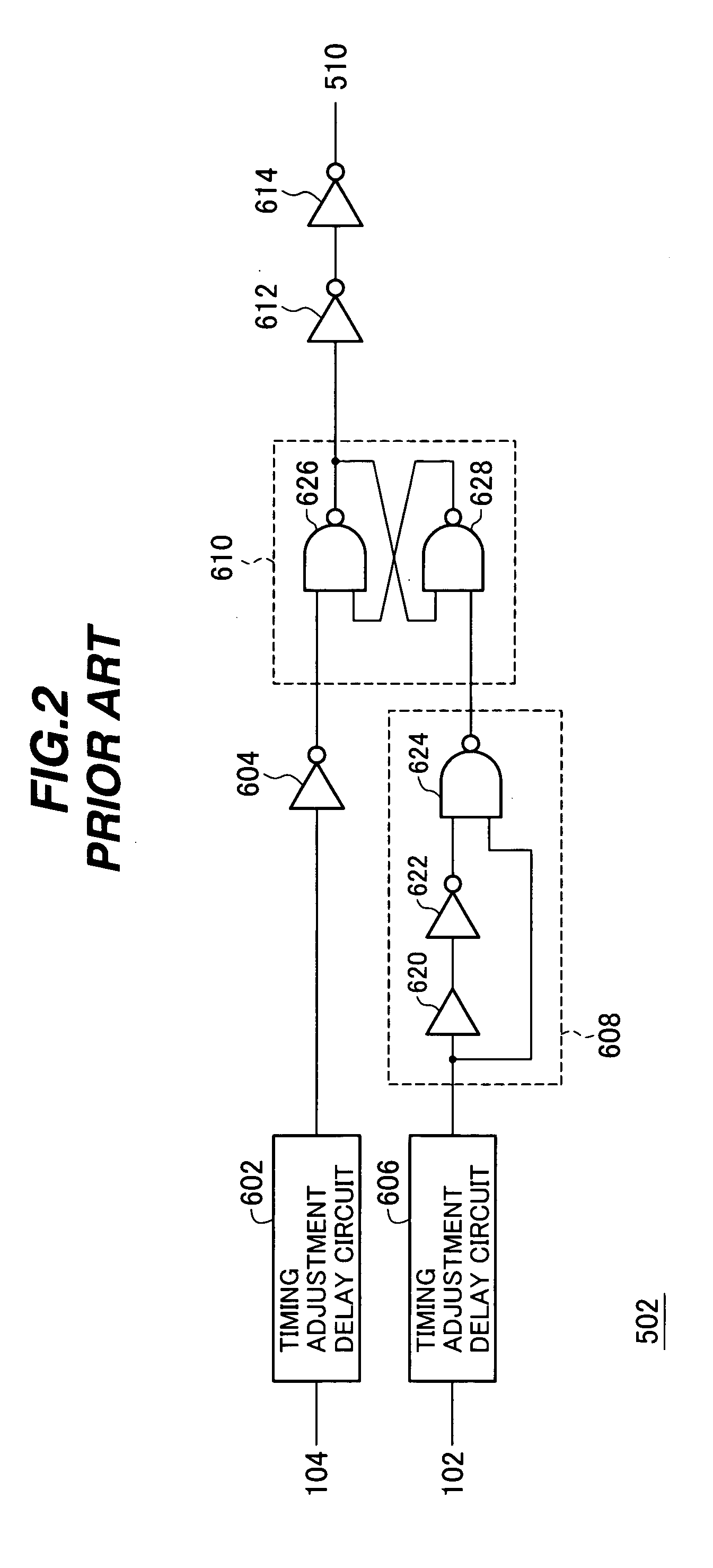High-speed synchronus memory device
a memory device and high-speed technology, applied in the direction of information storage, static storage, digital storage, etc., can solve the problems of corresponding shortening, possible read errors, and insufficient equalization, and achieve the effect of not shortening the write driving tim
- Summary
- Abstract
- Description
- Claims
- Application Information
AI Technical Summary
Benefits of technology
Problems solved by technology
Method used
Image
Examples
Embodiment Construction
[0029] A synchronous semiconductor memory device embodying the invention will now be described with reference to the attached drawings, in which like elements are indicated by like reference characters. Elements not relevant to the invention are omitted from the drawings. Signals and the signal lines on which they are carried will be identified by the same reference numerals.
[0030] Referring to FIG. 4, like the conventional synchronous semiconductor memory device 500, the invented synchronous semiconductor memory device 10 operates in accordance with a clock signal 102, a read signal 108, and a column address signal 110. The clock signal 102 is supplied from an external source, and is used to synchronize all operations of the synchronous semiconductor memory device 10. The read signal 108, which is high during read operations and low during write operations, is typically generated from external command input signals. The column address signal 110 is generated from an external addre...
PUM
 Login to View More
Login to View More Abstract
Description
Claims
Application Information
 Login to View More
Login to View More - R&D
- Intellectual Property
- Life Sciences
- Materials
- Tech Scout
- Unparalleled Data Quality
- Higher Quality Content
- 60% Fewer Hallucinations
Browse by: Latest US Patents, China's latest patents, Technical Efficacy Thesaurus, Application Domain, Technology Topic, Popular Technical Reports.
© 2025 PatSnap. All rights reserved.Legal|Privacy policy|Modern Slavery Act Transparency Statement|Sitemap|About US| Contact US: help@patsnap.com



